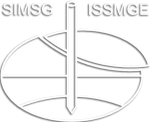Influence of MSW leachate contamination degree on soil shear behavior
Influence of MSW leachate contamination degree on soil shear behavior
This investigation assesses the influence of leachate contamination on the shear strength of soil and its microstructural implications over a six-month period. Employing a combination of macroscopic shear tests and microscopic SEM analyses, the study interprets the dynamic interactions between soil stability and varying leachate concentrations. Shear strength parameters, including peak and residual friction angles, alongside cohesion, were measured at leachate concentrations of 5%, 10%, 15%, 20%, and 25% relative to the soil's dry weight. The results indicate a decrement in both friction angles with increased contamination, while cohesion initially rises at lower contamination levels, peaking at 15%, before deteriorating. SEM imaging reveals significant microstructural transformations, highlighting the chemical and physical alterations in the soil matrix. These microstructural changes correspond to the observed macroscopic mechanical behavior, with increased contamination compromising the mechanical interlocking critical for soil shear strength.
F. Chihi; G. Varga
28th European Young Geotechnical Engineers Conference (EYGEC2024)
Keynote Papers
